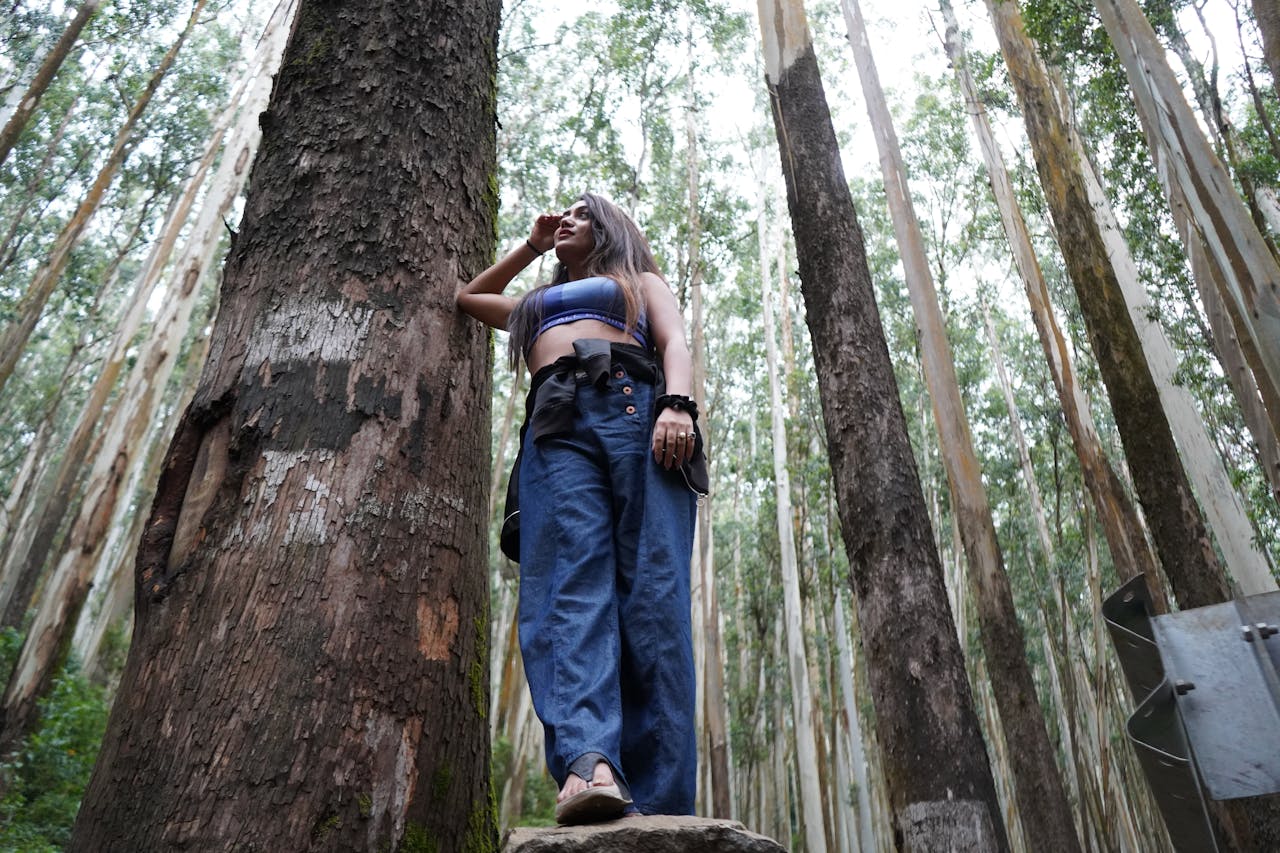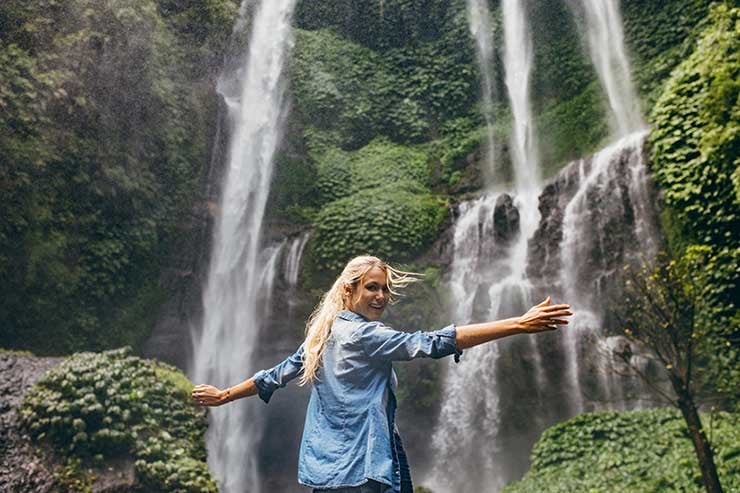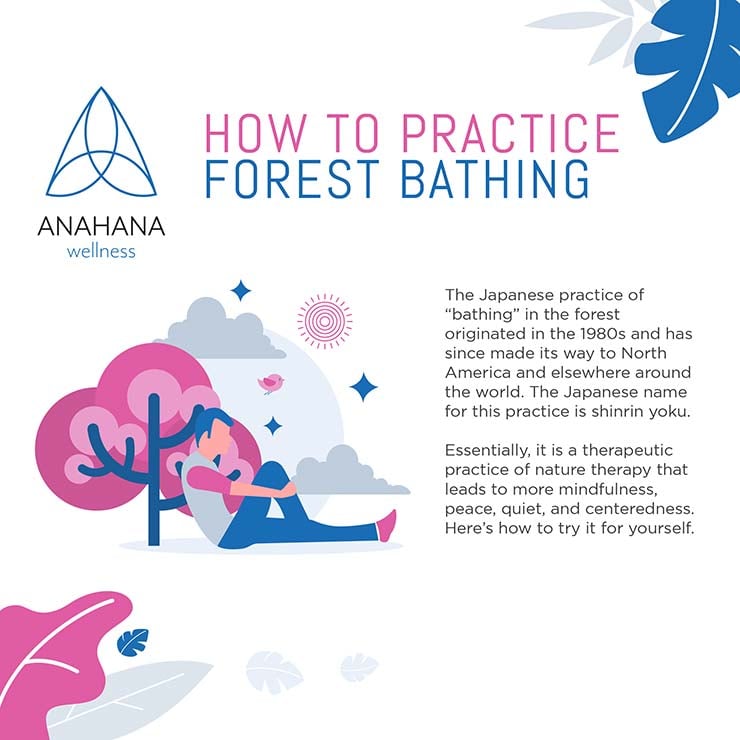
Table of Contents
Bathing in the forest is the therapeutic practice of spending time in nature beneath a canopy of trees. With origins in Japan, forest therapy has been gaining popularity amongst those looking to take care of their mental health and connect with nature on a more profound level. This article explores what forest bathing is about and why it’s an absolute game-changing activity everyone should try for health benefits.
Key Takeaways
- Forest bathing practice or Shinrin-Yoku, a Japanese practice, involves immersing oneself in nature to connect with the natural world.
- Forest bathe by spending time in a natural environment, like a nearby park or marked trails, to enjoy mental and physical benefits.
- It helps reduce stress, lower blood pressure, and enhance mental health.
- Forest walking in Japanese medicine supports forest medicine, improving overall well-being.
- Studies, like those from Nippon Medical School, show it boosts immune function.
- Practicing mindfulness in the present moment while forest bathing increases connection to nature
What Is Forest Bathing?
A walk in the woods — could this be the medicine you’ve been looking for?
If you're wondering, no, forest bathing has nothing to do with taking an actual bath in the forest. Instead, it has to do with taking in the environment around you, basking in nature's embrace.
Beneath a canopy of trees, this practice allows you to be with the forest, listening to its calming sounds, admiring the calming pictures and snapshots of organic life, and smelling the fresh air, simply feeling the stress disappear as you step into the forest environment.
Essentially, the practice involves a stroll in the woods. There is no goal or “end,” so one might even walking aimlessly while getting all the benefits of the forest atmosphere and absolute immersion. The point is simply to be in the moment. It is ecotherapy at its finest and mindfulness at its core. It is also an excellent way to de stress or boost immune system responses.
Where Does it Come From?
The practice of forest bathe comes from Japan. It’s most familiar by the term “Shinrin Yoku”, where “Shinrin” means forest, and “Yoku” stands for bath or bathing. The Forest Agency of Japan first suggested it in 1982 as a way to live a healthier lifestyle. With Japanese people spending a good amount of time indoors, the local Japanese ministry looked for ways to tackle high rates of depression in society and the adverse effects of the tech boom on Japanese city dwellers. The country’s forests came to the rescue. Ever since then, this Japanese practice has gained popularity all over the world.
Benefits of Nature Walking
 A multitude of scientific evidence shows that spending more time in nature promotes numerous benefits for both the mind and body. Forest walks themselves are known to improve mental health, but they’re also simply a good way to get some physical exercise.
A multitude of scientific evidence shows that spending more time in nature promotes numerous benefits for both the mind and body. Forest walks themselves are known to improve mental health, but they’re also simply a good way to get some physical exercise.
Let’s look at the specific benefits people in nature can expect from spending more time in the forest and taking more nature walks:
-
Relaxation: The quiet, calm, and solitude you get from a nature walk can inspire the relaxation response in your body.
-
Fresh air for the lungs: Smog and other pollution in cities and heavily-populated areas can irritate the lungs and contribute to breathing problems. Nature time can act as a reset. So taking deep breaths as you explore the forests can only do you good.
-
A break from technology: A constant stream of technology and information can blind you to the beauty of the earth.
-
Connect with nature: Feel like you belong and are connected to the world. Using all your senses to feel and notice will increase your overall level of awareness as you leave the forest and get on with your daily life.
-
Physical exercise: Fitting fitness into your week doesn’t mean going for a run or doing a prescribed workout. Sometimes, forest walks fit the bill perfectly, and it’s absolutely free.
-
Improved sleep: It has also been shown to affect your sleeping habits positively. Regular nature walks will improve your sleeping at night.
What Are Phytoncides?
Phytoncides are wood essential oils emitted from trees and other plants. According to research, phytoncides offer several benefits, including improved immune function and reduced depression and anxiety.
While some scientists, like those involved in trials like the Landscape Depression Studies, examine how oral medications affect patients who struggle with depression, many experts are reminding the population that nature has its way of healing.
Time in the woods cannot replace guidance from a licensed doctor, but it may be a way to add to or further enhance a healthy lifestyle. It’s also a good idea to research a forest bathing guide if walking aimlessly is not something that fits you at the moment.
Be Prepared for Your Hike
Ready to hit the hiking trails? Looking for “forest bathing near me”? To be fully “bathed” in your wooded surroundings, you should start by finding a good piece of forest.
Look at national, state, and local parks; you’ll likely be able to find a nice trail or two to start with
Of course, you also need to be comfortable. Here are a few things you may need to enhance comfort on your hike:
-
Comfortable boots or shoes
-
Comfortable pants
-
A water bottle and make sure to stay hydrated.
-
A map of the hiking trails or entire forest
-
A hiking backpack to carry any belongings
Forest Baths: Frequently Asked Questions
What is forest bathing?
“Taking a forest bath” is the practice of absolute immersion. It involves going into a forest beneath a canopy of trees and quietly spending time there, soaking up your surroundings.
What is the Japanese word for forest bathing?
The Japanese word for the practice of “bathing in the forest” is shinrin yoku.
Do I need any special equipment?
Depending on where and for how long you will be going bathing in the forest, yes, you may need some hiking gear, including but not limited to:
-
Hiking boots or hiking shoes that are comfortable, waterproof, durable, and lightweight
-
Hiking backpack that is lightweight, waterproof, and has plenty of space
-
Comfortable hiking pants wicks away moisture and has pockets
-
Hiking poles or a hiking stick for stability
-
A forest bathing book (especially if you don’t have an instructor to guide you)
Is forest bathing good for you?
Yes. The point of these hiking projects is to provide benefits to the mind, body, and soul. A shinrin-yoku (the Japanese term for a forest bath) is helpful because it reduces stress levels, improves feelings of joy, helps you relax, stay in the present moment and brings you in tune with the natural world.
Where does forest bathing originate from?
Bathing in the forest, or shinrin-yoku, originated in Japan in the 1980s. The Japanese government4 initially thought of hiking projects to combat the “adverse effects of the tech boom on Japanese city dwellers.”
What is forest bathing certification?
Bathing in the forest is often used in classes, rehabilitation programs, and wellness retreats. It may require teachers and instructors who can show students and participants exactly how to enjoy this practice to reap the most benefits.
Then, a forest bathing certification provides a solid base for those who wish to practice or teach this activity to others.
References
The Benefits of 'Forest Bathing' | TIME
'Forest Bathing': How Microdosing on Nature Can Help With Stress
Effect of forest bathing trips on human immune function - PMC
Forest Bathing in Japan (Shinrin-yoku) | Guide | Travel Japan (Japan National Tourism Organization)

Disclaimer
The contents of this article are provided for informational purposes only and are not intended to substitute for professional medical advice, diagnosis, or treatment. It is always recommended to consult with a qualified healthcare provider before making any health-related changes or if you have any questions or concerns about your health. Anahana is not liable for any errors, omissions, or consequences that may occur from using the information provided.

By: Sydney Garden
Sydney is a skilled writer and editor at Anahana with a diverse educational and professional background. Sydney received her BA (Honors) in Communications from Toronto Metropolitan University and is furthering her education by pursuing her MSc in Human Resource Management at the University of Stirling. While at Anahana Sydney focused on writing spiritual, angel number, and health and wellness content.